Part 2
Part.3
Part.4
Part5. Implied volatility
Part6. Biases in Black Scholes Merton Model
Conclusion
We collect the underlying asset price data for the last 6 months of the XOM stock price (from November 28th, 2011 to May 25th, 2012). We decided to ignore the dividend effect in our calculation by using adjusted close price. Since adjusted closing price is the price that is amended to include any distributions (which include dividend) and corporate actions that occurred in the past, using it to calculate historical returns is more accurate than using simple market close price. Moreover, it can reduce unnecessary risk of miscalculation. The closing price of stock in November 28th was $74.91 and the price in May 25th is $82.08. The maximum stock price in the period was $86.74 in Feb. 24th ,2012.
To calculate standard deviation, first, we counted 125 working days during the 6-month observation period because of public holidays in the United States (Christmas day, New year’s day, Martin Luther King day, Valentine’s day, President’s day, Good Friday). Second, the equation for historical volatility is: σ=s/√τ,with s=√(1/(n-1) ∑▒〖(u_i-u ̅)〗^2 ),and u_i=ln(S_i/S_(i-1) ).
We calculate 125 u_i, its average is 0.000737. Since n is 125, s is 0.009867924 and σ (historical volatility) is 1.4125%.
Part 2.
For this part and later parts, we prepared market option prices and risk-free rate. First, we got the call and put options on XOM stock with the maturity on July 20th, 2012. We collected the ask and bid price and set mid price of the them as market price. Second, we collected the risk-free rate 0.07% which is the 3-month US Treasury bond rate. To be more accurate we need 2-month US Treasury bond rate, but there is no 2-month US Treasury bond. Thus, rather than adjusting rate to 2-month sloppily, assuming there is no significant difference between 3-month and 2-month rate, we directly use 3-month US Treasury rate.
Now, we have all data for calculating Black-Scholes-Merton option pricing, so we could calculate Black-Scholes-Merton option price.




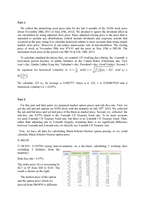
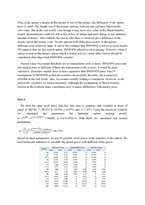
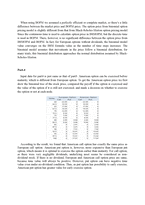
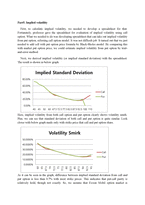
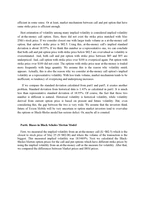
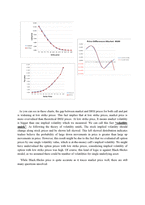

 분야
분야


